|
I am excited that Sam Thomas, author of The Midwife Mysteries, was able to join me on my blog today! To celebrate the fact that The Midwife's Tale is now available as an E-Book for just $2.99, Sam shares the story behind his cover! (Head over to Amazon or Barnes & Noble to pick up your copy!) One question that a lot of readers have asked is how The Midwife’s Tale wound up with its cover, and whether I had any say in its creation. It’s a pretty great question with an interesting answer. When I envisioned the cover of The Midwife’s Tale, I wanted it to look like a seventeenth-century book, largely in keeping with my original title, Bloody News from York. The image I had in mind was something like this book from 1635: I thought that this cover would both capture my setting and the central tension of the book, whether a woman would be burned at the stake. Unfortunately, kept this idea to myself for a bit too long, and before I said anything to my editor, he sent this cover: I was floored. I loved the darkness, the color scheme, the way the light played across the figure’s back… nearly everything about it.
The one concern my agent had was that it seemed a bit too still. I had written a murder story, after all, and he thought it could use a bit more danger. We suggested putting a knife in her hand, and perhaps replacing the stalks of grain on the table with a mortar and pestle. This is where Minotaur came through for me the first time. By all rights, they could have said, “Nope, this is it.” But they didn’t. They came back with a modified cover:
2 Comments
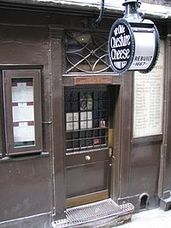 A little belatedly I am taking part in the September Sisters in Crime Sinc-Up for writers. (There are a few days left of September, right?) So one of the prompts was this question, "If someone said 'Nothing against women writers, but all of my favorite crime fiction authors happen to be men,' how would you respond?" Well, someone did say something along these lines to me once... I was at a mystery conference, and a fellow author introduced me to an older gentleman--I'll call him George--who apparently is a huge history buff. My friend told George that I write historical mysteries set in seventeenth-century London. George's eyes lit up and he told me that he had just been in London recently. I asked him what he had liked about his trip. George told me that he had liked seeing the Cheshire Cheese, a tavern that had been rebuilt in 1667 after the original was burnt down during the Great Fire of London. We-l-l-l-l....the Cheshire Cheese was actually the setting of my second novel--From the Charred Remains. In fact, I have a murder happen there just before the place burns down. So I told George this, and again, his eyes lit up. Then he asked me about my protagonist. I started to tell him about Lucy, my chambermaid-turned-apprentice, and he held up his hand and said, "I don't read books about women." Conversation over. Wha-a-a-a-a-a-a-a-t? I couldn't even begin to tell him about all the wonderful crime fiction that feature female detectives, sleuths, lawyers, reporters and a zillion other investigators that he was missing out on with such a dismissive stance. Patricia Cornwell's forensics specialist Kay Scarpetta. Rhys Bowen's amateur sleuth Molly Murphy. Kerry Greenwood's private investigator Phryne Fisher. Sara Parestsky's kick-ass V.I.Warshawski. Hank Phillippi Ryan's intrepid TV reporter Charlotte McNally. Not to mention the unflappable Miss Marple! And for anyone who likes strong female protagonists in historical mysteries, I've got a few that you MUST check out: Meg Mims writes the "Double Series" featuring feisty Western heroine Lily Granville; Anna Loan-Wilsey writes a terrific series set in New England featuring Hattie Davish, "a travelling secretary and dillettante detective," and Alyssa Maxwell writes the charming Gilded Newport Series with Emmaline Cross--"a Vanderbilt by heritage, a Newporter by birth, and a force to be reckoned with!" Well-written historical mysteries all! Hopefully we can turn the Georges of the world around, one fabulous female protagonist at a time! What about you? Who are your favorite female sleuths, detectives and investigators? Why do you enjoy them?
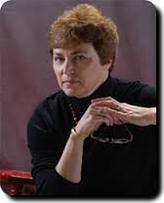 I’m joined today by Peg Herring, author of the Simon & Elizabeth Historical Mysteries, the Dead Detective Paranormal Mysteries, as well as the Loser Mysteries, our focus for this interview. I met Peg at Malice Domestic a few weeks ago when we did a panel together. When I heard about her protagonist Loser, a homeless woman who solves mysteries and speaks only thirty words a day, I had to learn more. *********************************************************************************** From the official blurb: Loser returns to the hills where she was raised in search of peace, but even in lovely West Virginia, trouble manages to find her. One of her fellow foster children returns to the little town of Beulah, and the secrets she carries with her will lead Loser into a tangle of deception. Nadine hasn’t got much to say about why she’s back in Beulah, and her son Eddie might be just a little too good to be true. Still, Loser’s willing to help them - at least until Nadine pulls a disappearing act. Each time Loser learns the answer to a question, another one arises. Why did Nadine run from a comfortable life and a successful husband? Is Eddie a good kid or an opportunistic manipulator? What happened in the town of Romulus that was worth killing for? And most important: Can Loser protect the innocent and at the same time preserve her own life, the life she’s only recently begun to want? *********************************************************************************** 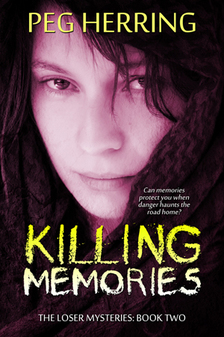 Hi Peg! Thanks for joining me today! Can you tell us more about Loser? PH: Loser is in her mid-twenties and quite dysfunctional. She can’t sleep inside; she counts how many words she speaks per day (under 30 is a must), and she doesn’t interact with people unless she absolutely has to. In the first book, Killing Silence, readers learned how she came to be so damaged. In the second book, Killing Memories, we see her start the long healing process. What inspired your Loser Mysteries, and Killing Memories in particular? PH: I spent several months in Richmond when a family member needed my help. She lived in one of the lovely row houses in the Fan, and I loved walking around the area every afternoon, gawping at the mansions, the statues, and the cobblestone alleys. However, there were homeless people, too, and the thought of someone so desperate living so close to such wealth made an impression on me. How did you go about doing research for your Loser mysteries? I assume it was a little different than how you researched your historical and paranormal series! PH: Definitely! Historical research (as you well know) means a lot of poring over books and websites to achieve historical accuracy. I did most of the research for the Loser Mysteries before I knew I’d be writing the series. Wandering through the Fan was restful for me during a stressful period of my life, but I was soaking up details the whole time. The actual writing means a lot of Internet time, because I live in Michigan, and I can’t just trot off to Richmond to confirm a detail that’s fuzzy in my mind. We’re lucky that so much is available on-line. For example, I located a picture of the DMV to help with Killing Mysteries, and lately I researched the Richmond police force for the third book, Killing Despair on the department’s website. You’ve written three different series now (a feat I’m extremely impressed by). Was your experience with Loser similar or different from the other series? Do you switch between series, or are the other series finished? PH: The idea for a story comes easily: it just floats into my head. I usually begin with a character, and the story builds naturally around him or her. I focus on one book at a time when I’m writing, but I do switch among the series, because they’re all current. Edits for a book in one series might interrupt the writing of another, because they come when the editor sends them. It’s a little rough sometimes to get started again when I start the next book. For example, I just finished one of the historicals, in which Simon is a contented tradesman of the Tudor era, a man who’s comfortable with himself. It took some thought to get myself back into Loser’s head and to put myself on the streets of Richmond with a woman who is definitely not comfortable with herself. What is your favorite part of writing? PH: My favorite thing is that day when the writing goes well, when everything falls into place and makes sense. I sometimes go away from home to remove the distractions of laundry and lawn care, but if I get in the zone at home, I can be productive there, too. Least favorite? PH: My least favorite part of this job is keeping up with the technology, mostly because I’m not that interested. Way back when, I learned MySpace. Then I added Facebook and learned to get around there. Then Goodreads and a host of other reader sites. When Twitter came along, I established a presence there, though it’s pretty minimal. People rave about how other sites help their sales, but I’m reluctant. In the first place, I don’t have any more time, and in the second, I don’t enjoy being lost on Pinterest! What has surprised you most about the writing/publishing process? PH: I think everyone’s surprised by the same sad facts: You don’t get rich. You don’t get famous. You don’t just write the book and then relax. (Wait, what? I'm not going to be famous? --SC) What advice would you give to aspiring writers? PH: I always start with one word: persist! Everything necessary for writing success requires persistence. You have to keep writing to improve your craft. You have to keep asking someone to look at what you’ve done. And you have to keep reminding the world that your work is out there, ready to be enjoyed. What are you currently working on? What's next? PH: The third Simon & Elizabeth Mystery, The Lady Flirts with Death, has a June 5th release date from Five Star Publishing. I got my author copies a few days ago, which is always an exciting time. My other publisher, LL-Publications, has the next in the paranormal Dead Detective series, Dead for the Show, somewhere in the copy-editing phase. No release date yet. As I said above, I’m at work on the third Loser Mystery, Killing Despair, and I just hit the place where it feels like it’s coming together, so it shouldn’t take more than a dozen years now! Thanks for inviting me, Susanna. I enjoyed meeting you at Malice, and though I’ve only started A Murder at Rosamund’s Gate, I already like the characters! (Aw, shucks, thanks! -SC) Thanks again for stopping by! I hope you can come back again to talk about your historical novels, which are terrific! 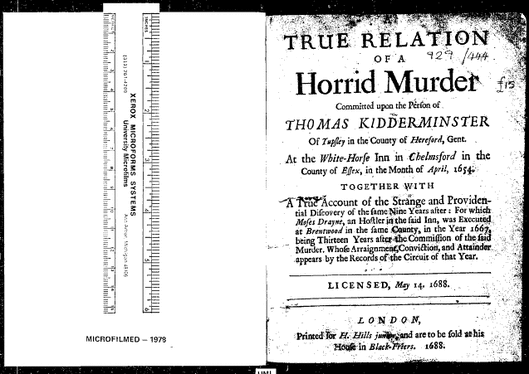 Date: 1688 Reel position: Wing / 853:61 Fans of Sherlock Holmes may be intrigued to know that the first known female sleuth in England was Anne Kidderminster (nee Holmes), a seventeenth-century widow who tracked down and brought her husband’s murderer to justice thirteen years after the crime. To find out more, check out my guest blog over on Criminal Element, found under the excerpt of A Murder at Rosamund's Gate. 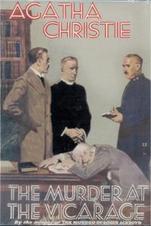 original 1930 UK edition Recently I've been thinking about the history of female sleuths--at least of the literary variety. I'd assumed that the first had emerged in the "Golden Age of Detective Fiction" (the period between World War I and World War II, when many great fictional detectives emerged). Certainly, two early female sleuths were gentle Miss Marple and the intrepid girl detective Nancy Drew, although neither was the first female detective. Miss Marple first emerged in one of Agatha Christie's short stories ("The Tuesday Club Murders") in 1925, although she was not featured in a full-length novel until The Murder at the Vicarage was published in 1930 (Check out the original cover above. Anyone missing? Hmm...). 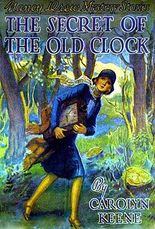 the chic 1930s detective Interestingly, the first Nancy Drew mystery (The Secret of the Old Clock) was also published in 1930. (The authorship has been much contested, and the stories have been much revised, but the pseudonym "Carolyn Keene" is understood now to be the creation of Edward Stratemeyer and a series of ghostwriters, including Mildred Wirt). In many ways, Nancy Drew and Miss Marple could not be more different. Miss Marple elicited friendships over tea, making sense of gossip, while Nancy listened at keyholes, regularly finding herself captured or bopped over the head. Miss Marple was a lively middle-aged "spinster" who demonstrated wit and wisdom, while Nancy was a titian-haired teenager, later college student, who was highly skilled at everything. Yet, arguably, both sleuths were products of the Great War. Miss Marple had lost her fiance and chose to make her own way in the world. Nancy had benefited from the nascent women's rights movement in the U.S, believing without reservation that she could do anything that men could do, including catch criminals. 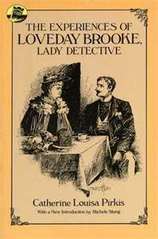 Loveday Brooke at work With a little more digging, however, I found that the Victorians had actually produced the first female detectives. In 1864, Andrew J. Forrester Jr. introduced Mrs. G. in the Female Detective, and other female sleuths followed soon after. These women seem to have represented a different type of reformer--rather than those who sought to reform prisons, factories and mills, and schools, these female detectives seemed to be suggesting a reform of the police force. The first female sleuth I could find that had been created by a female author was Loveday Brooke, in Catherine Louisa Perkis' The Experiences of Loveday Brooke, Lady Detective (1893). Loveday Brooke, destitute at 30 years old, had defied patriarchal convention to join a detective agency. Much like her better known contemporary, Sherlock Holmes, Loveday relied on her intellect and logical thinking to suss out her criminal adversaries. She offered a counterpoint to the widespread belief in the late nineteenth-century that women were emotional, hysterical, and incapable of logical reasoning. In many ways, these sleuths seem to reflect something of their times. It makes me wonder, first, how my own amateur sleuth, Lucy Campion, might be a product of my experience? It also makes me wonder generally about more recent trends of female sleuths who have (more-or-less successful) crafts, businesses, and hobbies on the side, which inform their crime-solving capabilities. Just curious: Do you think characters (sleuths or not) are still products of an author's time? And if you don't like that question: What sleuths or detectives (female or male!) do you enjoy? Why? |
Susanna CalkinsHistorian. Mystery writer. Researcher. Teacher. Occasional blogger. Categories
All
Archives
May 2023
|
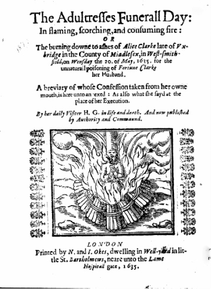
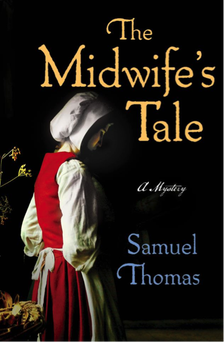


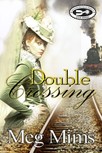
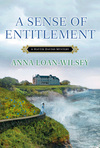
 RSS Feed
RSS Feed